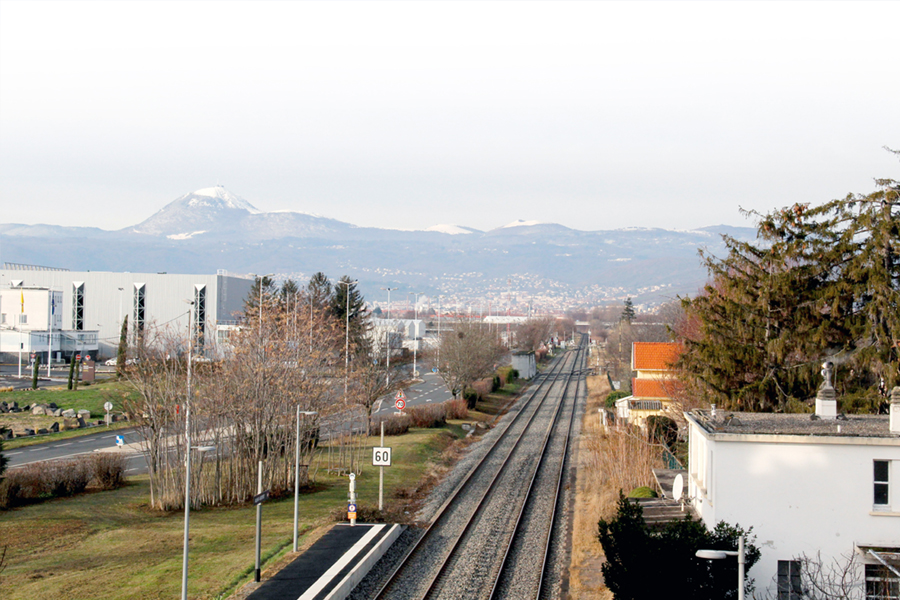Aulnat Centripète
Aulnat (FR) - Runner-up

From left to right: Maria Domínguez, Beatriz Saladich, Biel Susanna, Alfonso Bertran and Xavier Isart
TEAM DATA
Associates: Biel Susanna Viladot (ES), Maria Domínguez Guasch (ES), Xavier Isart Torruella (ES) – architects, Beatriz Saladich Nebot (ES) – architect urbanist, Alfonso Bertran Gil (ES) – spatial planner
Collaborators: Valentina Piliego (IT) – landscape architect, Pablo Toubes (US/ES), Marc Castaño (ES) – architects
Carrer Boters, 1
08002 Barcelona, Spain
+34 (0)6 38 53 23 51
europan16.aulnat@gmail.com
See the complete listing of portraits here
See the site here
TEAM PORTRAIT
VIDEO (by the team)
INTERVIEW
Click on the images to enlarge
1. How did you form the team for the competition?
We have all been connected to the School of Architecture in Barcelona (Escola Tècnica Superior d’Arquitectura de Barcelona). The team is a result of a long-term friendship that began during our architectural studies in Barcelona. We took Europan as a great opportunity to think about some of the challenges that we are facing as a society nowadays.
2. How do you define the main issue of your project, and how did you answer on this session main topic, Living cities?
Aulnat centripète proposes a resilient urban model for the town of Aulnat, based on a concentric system that enhances the singularities of its urban and landscape context. This model consists of four strategies for its sustainable development, aiming to improve its climate comfort and the life quality of the inhabitants:
- Implementation of a new loop of local public transport, with a zero carbon footprint bus that links the different neighbourhoods around the city centre of Aulnat, and a new intermodal station (train-BHNS-airport) within the site of the current train station.
- Management of rainwater within the public space network, with natural methods of retention and infiltration.
- Creation of interface elements with the surrounding landscape, through two landmarks located in the strategic sites of the train station and the ancient Bourdon sugar factory, and a landscape promenade along the perimeter of the town.
- Creation of a local production strategy, including three types of production that are based on a model of circular economy: an agri-food production, a renewable energy production and a more immaterial production related to the own socio-cultural values of Aulnat.
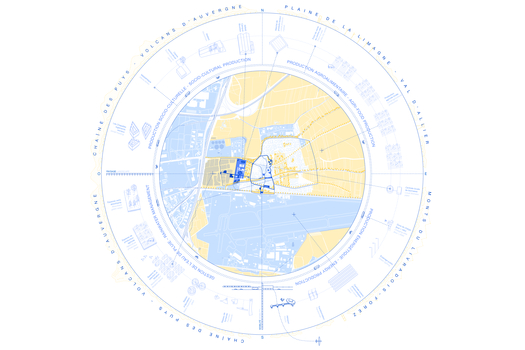
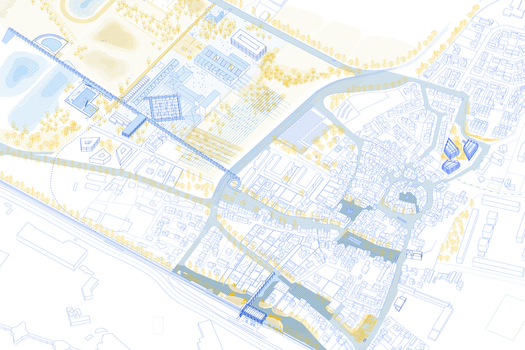
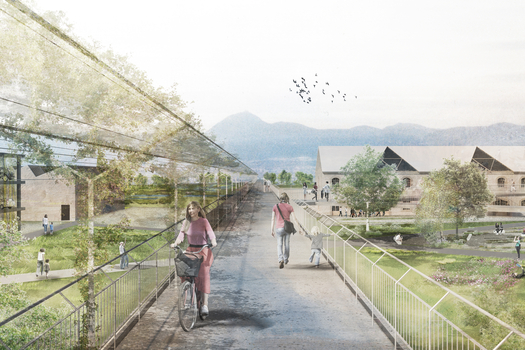
Aulnat maintains a singular relationship with its surrounding territory, located at the interface between its metropolitan heart and the archipelago of the Limagne Plain, consisting of small rural settlements surrounded by agricultural fields. This small residential town presents a relatively clear outline, defined by big infrastructures that provide a close relation to the city centre of Clermont-Ferrand: the airport, the A71 highway, the train line Clermont-Ferrand-Thiers and two department roads. Despite this strategic location, Aulnat presents an internal configuration of ‘dormitory town’, whose economy and life quality are highly dependent of its big neighbour, Clermont-Ferrand.
The project explores the formulation of a new vision for the town of Aulnat, starting from a local strategy that generates a series of magnets and interface elements between the intense metropolitan heart and the rural environment of the Limagne plain.

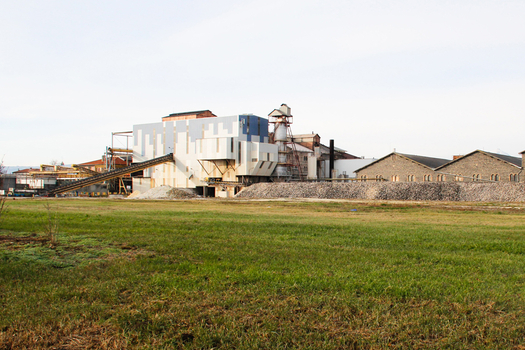
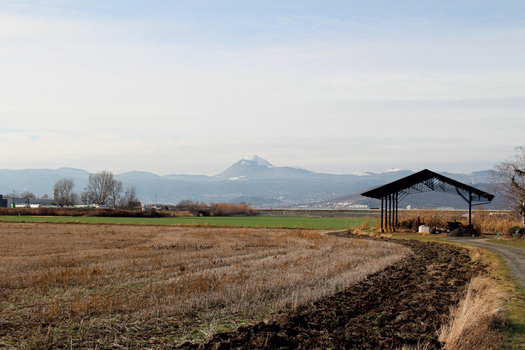
Yes. All the members of our team have a transversal professional background where we have treated similar issues. Therefore, this project allowed us to put in practice all the knowledge that we acquired through the last years, either individually or together. Some of the reference projects that inspired Aulnat centripète include:
1. Bellinzona Bathhouse by Aurelio Galfetti, Bellinzona (CH), 1967
This project was a clear reference for the interface elements we used in our project, connecting the sites of the station and the sugar factory to its immediate context and providing a specific relation to the territorial scale. The project consists of a linear promenade that links a series of pools, raised from the floor and providing an overview of the surrounding landscape.
2. MFO Park by Burkhardt + Partner AG, Zurich (CH), 1998
This project relates to the hybrid program and public space at different levels that we proposed for the sugar factory and the station sites. The latticework, enveloped by sumptuously sprawling plants, sieves the light thus achieving an embracing atmosphere.
3. UAB research center by H arquitectes + DATAAE, Barcelona (ES), 2014
This project relates to the hybrid program and the sustainable development of the three sites. It has been thought as an adaptable and flexible infrastructure able to suffer changes of use over the years.
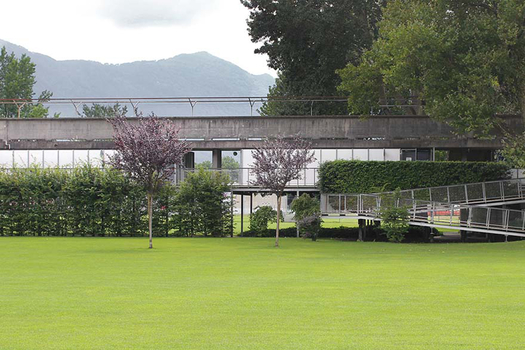
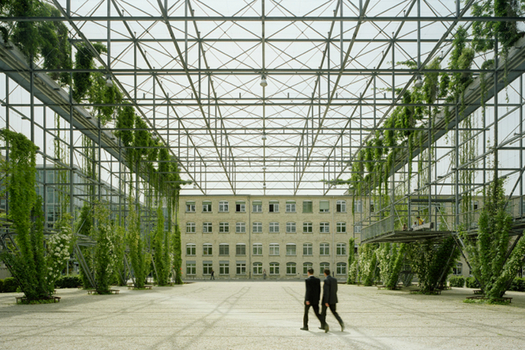
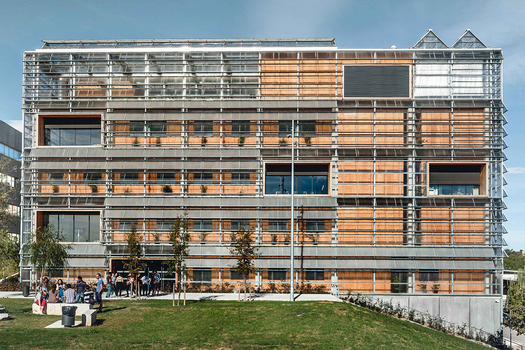
The new plan for Aulnat is conceived as a process in time, where the key phases are as important as the final result. It consists of a long-term process that begins with the implementation of a mobility loop and two interface elements that link the three project sites with the city centre and the surrounding landscape. For the implementation of the full masterplan for the three project sites, we propose a graphic with different concepts of development through a timeline of the coming thirty years. This tool would allow us to establish a dialogue with the different municipal and regional organizations on the development of the project.
6. Is it the first time you have been awarded a prize at Europan? How could this help you in your professional career?
Yes, it is the first time! It has been a very enriching experience to work together on this proposal. It allowed us to explore different approaches and put in practice several concepts working as a collective. It is very exciting for us to be awarded and this encourages us to keep on working on this competition field. We also hope that Europan can expand our professional network in the architectural community.
TEAM IDENTITY
Office: -
Function: Architects, urbanist, spatial planner
Average age of the associates: 30 years old
What is the individual status of the associates’ members?
· Xavier Isart and Maria Domínguez are associates and have their own studio in Barcelona since 2020.
· Beatriz Saladich is a freelance architect and student of the European Master in Landscape Architecture since september 2021, based in Barcelona and Paris. Beatriz has been project leader at LIST Office Ido Avissar in Paris until 2021.
· Alfonso Bertran is a territorial strategist at Fundación RIA, a non governmental organisation founded by David Chipperfield that promotes sustainable development in rural environments of the Atlantic region of Galicia.
· Biel Susanna is an architect at Jorge Vidal Studio.
Is your team multidisciplinary? If yes, what are the disciplines and why did you include them to your project?
Discipline 1: Spatial planning, To understand the problematics in the territorial scale and generate a resilient urban model for the town of Aulnat, establishing new productive, social and economic synergies.
Discipline 2: Urbanism, To understand the problematics in the urban scale and provide specific linking figures and programs in Aulnat, strategically located within the three project sites.
Discipline 3: Architecture, To understand the existing architectural logics and typologies and propose specific solutions for the three project sites: Les Chapelles, the station and the sugar factory.
Has your team, together or separately, already conceived or implemented some projects and/or won any competition? If yes, which ones?
Awarded competitions separately:
· 2nd prize. Refurbishment of Tabacalera in Tarragona · In collaboration with: Josep Linàs, Roger Subirà i Kultura (2018). Xavier Isart
· 1st prize. Cel obert festival of ephemeral interventions, Tortosa. In collaboration with Laura Veciana (2014). Xavier Isart and Maria Domínguez
· Special Mention. Rethinking Tarifa competition (2015). Xavier Isart and Alfonso Bertran
· 1st prize. Open oproep 3407 - Masterplan Moerbeke 2050, Belgium (2018) · As project leader at LIST Office Ido Avissar, in collaboration with LOLA Landscape. Beatriz Saladich
· 1st prize. Open oproep 3504 - Care center in Wommelgem, Belgium (2018) · As project leader at LIST Office Ido Avissar, in collaboration with Hideyuki Nakayama architects. Beatriz Saladich
· 2nd prize. Kotmet student housing in Brussels, Belgium (2018) · As project leader at LIST Office Ido Avissar. Beatriz Saladich
· 1st prize. UIA-HYP CUP, Unexpected City, Beijing (2014) · In collaboration with Stefanos Theodorou. Biel Susanna
· 1st prize. New Prague Congress Center, Prague (2017) · In collaboration with OCA Architects. Biel Susanna
Implemented projects separately:
· Hawker restaurant in Barcelona · In collaboration with: Laura Veciana (2016). Maria Domínguez and Xavier Isart
· Refurbishment of an office space in Sardenya Street, in Barcelona (2017). Xavier Isart
· Refurbishment of an office space in Diagonal Avenue in Barcelona (2018). Xavier Isart
· Refurbishment of an office space at Burgos Avenue in Madrid (2019). Maria Domínguez and Xavier Isart
· Refurbishment of an apartment in Diagonal Avenue in Barcelona (2019). Maria Domínguez and Xavier Isart
· Refurbishment of a small flat in Corsega Street, Barcelona (2021). Maria Domínguez and Xavier Isart
· Refurbishment of an office building in Àvila Street, Barcelona (2021). Maria Domínguez and Xavier Isart
· Refurbishment of an apartment in Sicilia Street, Barcelona (2020). Beatriz Saladich
· Refurbishment of an office space, Burriana, Castellón (2021). Beatriz Saladich
· Landscape design for a solar plant, Burriana, Castellón (2021). Beatriz Saladich
· Refurbishment of an office space and apartment in Cristobal de Moura Street, Barcelona (2021). Beatriz Saladich
· Refurbishment of an apartment in Independència Street in Barcelona · In collaboration with ASBR (2021). Beatriz Saladich
Does your team share a common workplace? if yes, give us a short description:
As we are living in different cities at the moment, we have been working online, and arranged some punctual workshops together in Barcelona during the process.



